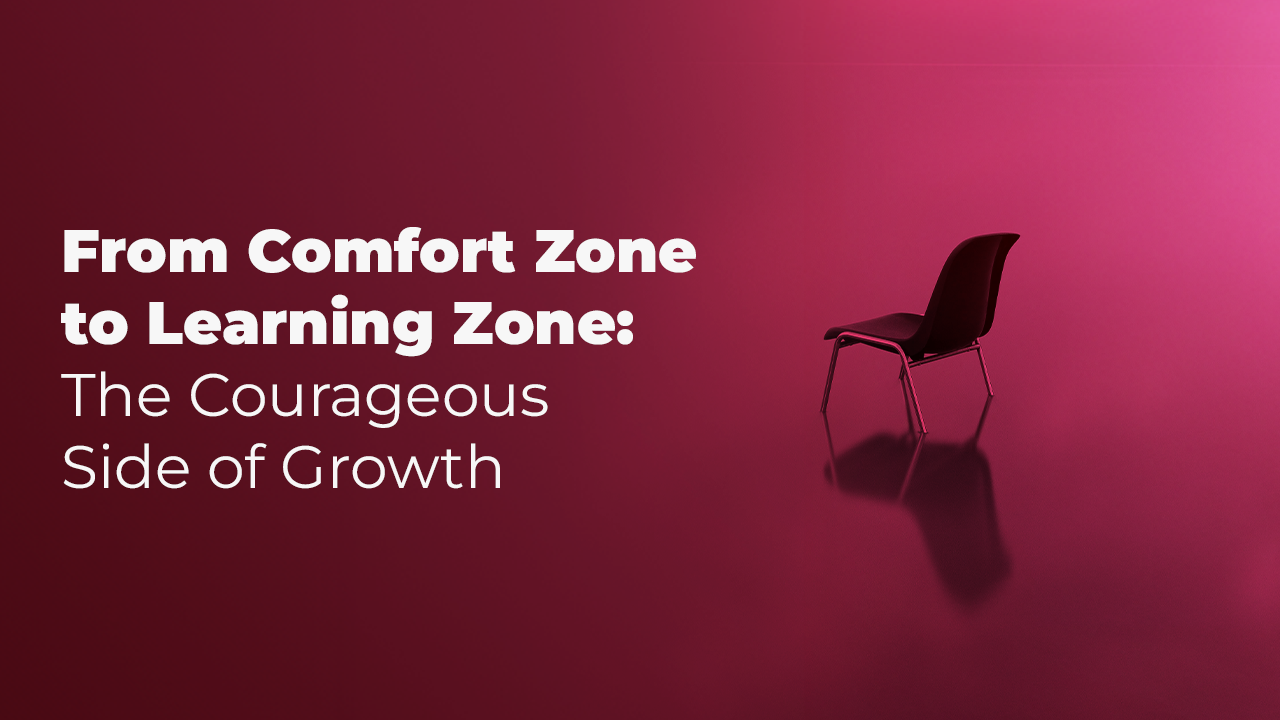From Comfort Zone to Learning Zone: The Courageous Side of Growth
One morning, as you stir your coffee before heading to work, you notice something:
Everything feels familiar.
The same mug, the same notebook on your desk, even the same playlist playing in the background.
Comfortable. Calm. Risk-free.
But also… static.
That’s what we call the comfort zone.
And ironically, despite its name, it’s often the place where we limit ourselves the most.
In 1908, psychologist Robert Yerkes found that people perform steadily when they feel comfortable—but their learning and growth accelerate significantly when they experience a moderate level of stress.
Today, we call this the Learning Zone Theory.
According to the theory, human growth can be illustrated through three concentric circles:
- Comfort Zone: Where everything feels predictable.
- Learning Zone: Where new skills are tested, uncertainty is felt—but so is potential.
- Panic Zone: Where fear and excessive stress block learning.
So, it’s not about leaving comfort altogether; it’s about stepping into uncertainty without panic.
What Does the Comfort Zone Look Like in Corporate Life?
In office hallways, the comfort zone often hides behind familiar phrases:
- “This is how we’ve always done it.”
- “There’s no need to switch systems; this one works fine.”
- “Let’s not take risks—we tried that before.”
These sound like lessons from experience, but often they’re just habits in disguise.
Corporate culture can unconsciously program itself to preserve the status quo, where innovation starts to feel like a threat.
And that’s where courage comes in.
Because stepping into the learning zone means embracing uncertainty.
It’s not the safer path—but it’s the one where growth truly happens.
The Moment of Choice
Picture an employee.
They’ve worked in the same department for years, mastering their role. They’re respected, valued, and confident.
Then one day, they’re offered a new project.
A new department. A new leader. A new set of challenges.
Their inner voice starts whispering:
“What if I can’t handle it?”
“What if I fail?”
“What if I lose the comfort I’ve built?”
At that moment, a crossroads appears.
They can choose the safety of the familiar—or the learning of the unknown.
And those who choose the second path eventually discover something powerful:
True security doesn’t come from familiarity; it comes from self-trust.
What Does the Learning Zone Mean for Organizations?
Organizations, much like individuals, can get stuck in their comfort zones.
Relying on the same growth models, familiar processes, or risk-averse thinking can slowly weaken innovation.
Examples include:
- Clinging to outdated business models during crises,
- Resisting digital transformation,
- Measuring employees only by performance metrics.
Each of these is a sign of an organizational comfort zone.
But today’s organizations must evolve into learning organizations.
That means not just providing training—but also normalizing mistakes, creating space for experimentation, and viewing “failure” as a natural step in growth.
At AVD, our approach to organizational development is rooted in this mindset:
Helping companies make peace with uncertainty, and transform their comfort zones into ecosystems of learning.
🔄 The Three Stages of Moving into the Learning Zone
- Awareness
“I’ve been thinking this way for too long.”
Most people don’t even realize they’re in a comfort zone.
Awareness is the first threshold of growth. - Small Experiments
Not big leaps—but gentle stretches.
A leader trying a new meeting format.
A team testing a different communication tool.
An employee expanding their scope of responsibility.
Each is a small window opening into the learning zone. - Psychological Safety
The most critical element.
When people feel they won’t be judged for mistakes,
they choose to learn from them.
Google’s 2015 Project Aristotle proved that the single most important factor separating high-performing teams from others was psychological safety.
In other words, the place where you can truly be yourself is the place where you learn fastest.
Growth Fatigue: The Dark Side of Continuous Learning
Of course, staying in “learning mode” constantly isn’t easy.
In today’s corporate world, we’re surrounded by messages like “Be agile,” “Keep developing,” “Adapt fast.”
Over time, these can lead to learning fatigue.
That’s why organizations must design growth processes that are not just goal-driven, but human-centered.
Training, development, and mentoring shouldn’t feel like races—they should feel like experiences.
Sometimes, growth is quiet:
Speaking up for the first time in a meeting.
Giving feedback without fear.
Admitting a mistake instead of hiding it.
That’s where real transformation begins.
What Lies Beyond the Comfort Zone?
For some, it’s a new job.
For others, a new idea—or simply learning to say no.
Everyone’s learning story looks different beyond their comfort zone.
But one thing remains constant:
Growth always requires a bit of courage.
Because that’s where life feels most vivid—where mistakes are possible, learning is possible, sharing is possible, and change is possible.
The Shared Truth for People and Organizations
Comfort zones are sanctuaries—but staying too long can hold us back.
That’s why the most forward-thinking organizations aren’t afraid to ask uncomfortable questions:
- “Why do we do it this way?”
- “Who decided this method in the first place?”
- “Could there be another way?”
These questions spark transformation.
And that spark ignites a culture of learning.
For both individuals and organizations, the goal isn’t to abandon comfort—
it’s to balance comfort with learning.To stay grounded in safety, yet open to change.
And those who master that balance don’t just adapt to change—
they shape it.
